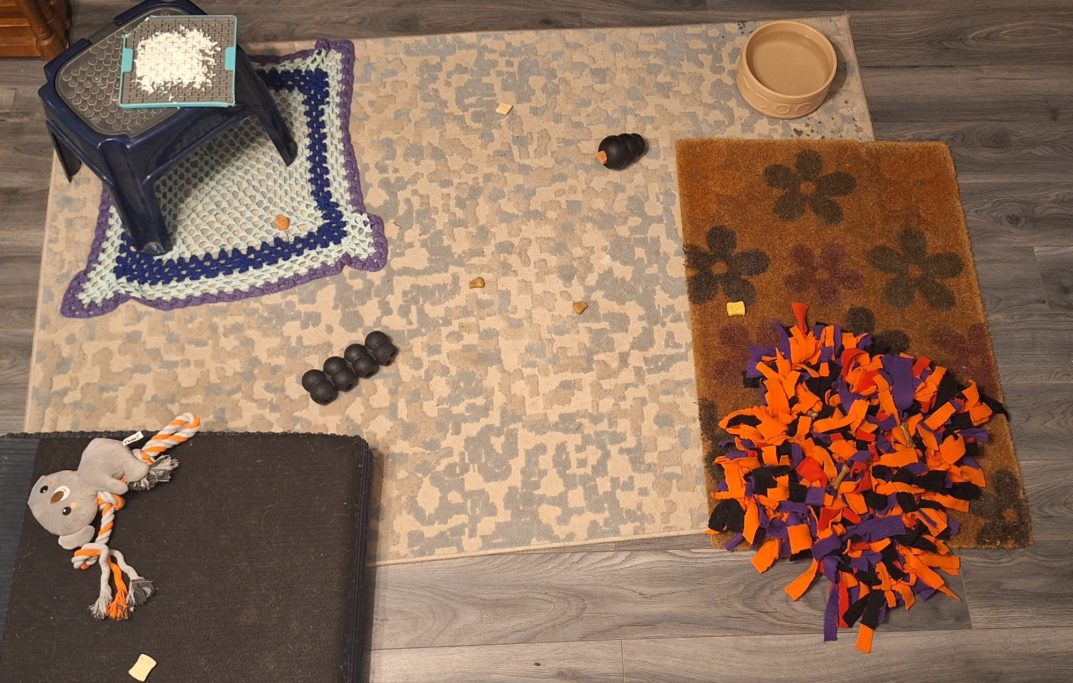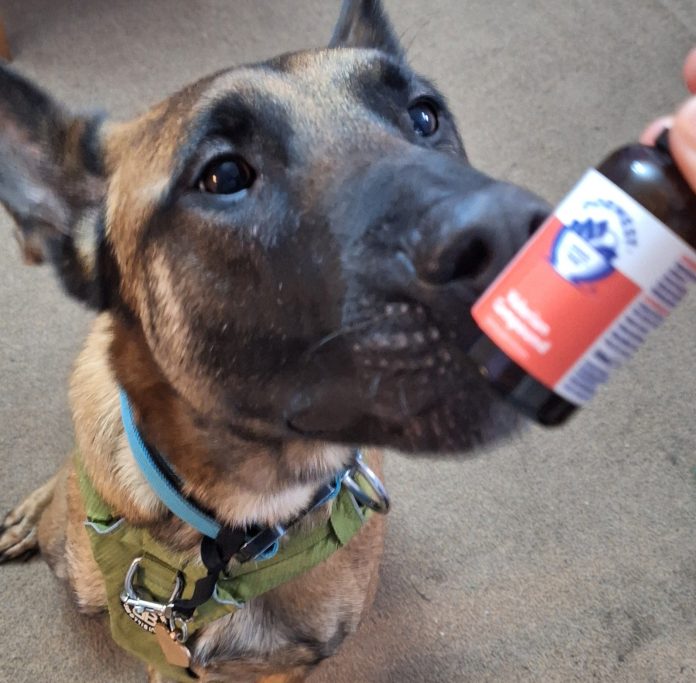The Magic of Free Work
16/04/2024
An activity that can be adapted and participated in by every dog, regardless of age, breed or temperament. Low-impact: well-suited to seniors. Can be done anywhere: a great indoor option for pre-vaccinated pups or rain-averse pooches. Facilities confidence, exploration and resilience-building: great for our more anxious furry pals. We’re talking about Free Work!
Free Work was first developed by Sarah Fisher at Animal Centred Education. Starting with the concept of groundwork as part of a T-Touch approach (by Linda Tellington-Jones), but taking it further to include a variety of sensory experiences and more of an independent, dog-led approach. ACE Freework has become a valuable tool for dog professionals, helping to highlight observations about dog movement and preferences, in a low-pressure, hands-off way. It can also be used to help a dog learn to cope with novelty, certain sensations and sounds. As such, it can help them build skills to navigate worrisome, emotionally arousing or new situations. More importantly, however, it is fun!
The ACE Freework activity will engage your dog’s brain, leaving them feeling tired and relaxed at the end of the session. It has a particular usefulness after stressful situations, to help the dog unwind, such as post-grooming or vet visit. There is no pressure on the dog to perform, nor interact with the team member. This makes the activity a good starting point for building positive relationships between unfamiliar dogs/team members, at the dogs’ pace. Interacting with and exploring the Freework set-up encourages confidence and resilience-building.
The set-up itself would be variable. At each session, a variety of floor textures should be present – such as astroturf, towels, cardboard, rubber matting. A variety of foods would be available, both on, between and around the various items. This ensures the dog does not feel coerced or pressured to interact too far past their comfort zone. These foods would vary in texture, smell, shape, size ect. Toys can also be present, both familiar and unfamiliar. Different levels of surfaces can be experimented with, perhaps the dog prefers licking liver paste off an elevated surface? Or enjoys to fully explore the set-up, before tucking into the selection of treats? For dogs with a specific behavioural concern, Free Work could be adapted to help them. Such as, presenting interactive, noise-making objects, to help a worrisome dog feel a sense of agency, despite scary sounds. Scents are another sense to consider. Beyond using stinky foods, Free Work could be combined with Zoopharmacognosy, where dogs can self-select and sniff dog-safe herbs, sprays (sprayed onto surfaces, such as a towel) or essential oils (in safe concentrations). This is similar to aromatherapy, except the dog has control over which scents they choose to linger nearby or which to avoid.
Overall, Free Work is a wonderful concept, first developed by Sarah Fisher and has benefits for all dogs. Four P4ws is excited to now offer Enrichment Visits, in which Free Work will be our main reference. These visits will be 30 minutes in length – plenty of time to engage their brain, ending their session feeling tired and relaxed.
Written by FOUR P4WS team member Jess, behaviour consultant of HeartHounds.co.uk
Bibliography/Further Reading:
A simple how-to for a Freework set-up: https://nutleydogs.co.uk/wp-content/uploads/2022/01/Freework-handout.pdf
Tilly Farm: http://www.tilleyfarm.org.uk/index.shtml
T-Touch/Ground Work: https://www.ttouch.co.za/groundwork/
Aromatherapy/Zoopharmacognosy: https://angliandogworks.com/blogs/training-tips/aromatherapy-for-dogs
We need your consent to load the translations
We use a third-party service to translate the website content that may collect data about your activity. Please review the details in the privacy policy and accept the service to view the translations.



